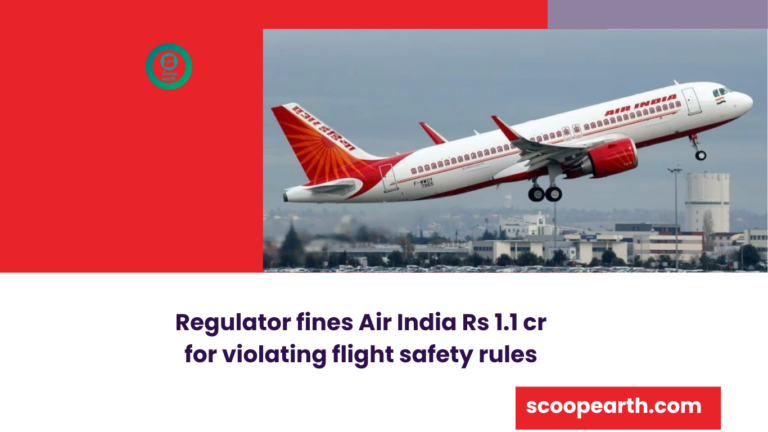DGCA yesterday said it had penalized Air India Rs 1.1 crore for violating safety rules on flight operations over certain long-range routes that were “critical” in terms of terrain. Last October, a pilot filed at DGCA that the Tata-run airline had an inadequate supply of emergency oxygen on its Boeing 737 aircraft flying to the US.
After an inquiry, the DGCA found merit in the pilot’s allegations and awarded him with the aforementioned penalty. Air India to procure 500 new jets through order spokesperson stated, “We do not agree with the DGCA order.” On the issues raised, Air India, along with external experts, looked into it, concluding that there was no compromise on safety whatsoever. We are studying this order in detail and will review our options including appeal as well as taking up to take them out against regulator,” the spokesperson added.
Should cabin pressure drop unexpectedly, sufficient emergency oxygen enables people inside to perform normal breathing as the levels of air at such altitudes are insufficient for respiratory activities.
This guarantees that people inside the plane do not lose consciousness and functionality, providing some time for pilots to respond regarding what is happening so that they can land at a safe altitude.
This is not the first time that this Tata Group-run airline has faced the wrath of such regulators for not abiding by his directions and rules. This month, Air India was directed to pay a Rs 30 lakh fine for the absence of adequate pilots who are trained in CAT-III landings during winter.
Major airports in India use CAT-III instrument landing systems, which permit pilots to land their flights with visibility as low as 50 meters.
On the other hand, a pilot ought to be taught how this system is used. Only two weeks ago, hundreds of flights were delayed or canceled in many parts of the country due to fog.
On Wednesday, the regulator said it opened a “comprehensive” probe after receiving a voluntary safety report from an Air India employee claiming ‘safety violations’ on its flights that are now run in long-range terrain critical routes.
Since the prime face investigation revealed the noncompliance of the airline, a show cause notice was issued to Air India Limited’s accountable manager. In regards to the laid-down regulations of DGCA and performance limits as well prescribed by OEM, a response about the show cause notice was also considered. In this case, the OEM was Boeing, which produced B777 aircraft.
Since the operations of said leased aircraft were not by regulatory/OEM performance limits, DGCA took enforcement action against Air India and imposed a penalty amount worth Rs 1.10 cr on them”, it further added.
The regulator did not mention what the particular violations by the airline were. On the regulatory front, Air India has been under constant glare during 2023.
In November last year, the DGCA penalized Air India a sum of Rs 10 lakhs for passengers affected by flights delayed and unserviceable seats not compensated, as well as for ground personnel who were lacking training according to regulations.
In September 2023, the regulator suspended Air India’s approved training organization (ATO) license, effectively suspending operations for both its simulators: the Boeing simulator in Mumbai and the Airbus simulator at Hyderabad.
Ankit Kataria is an experienced content writer with over 2 years of expertise in crafting insightful articles on startups, trending topics, business, economy, and finance. With a keen eye for detail and a passion for delivering well-researched content, Ankit ensures that his articles are engaging, informative, and valuable to readers. His writing style blends analytical depth with clarity, making complex topics easily understandable for a broad audience.










